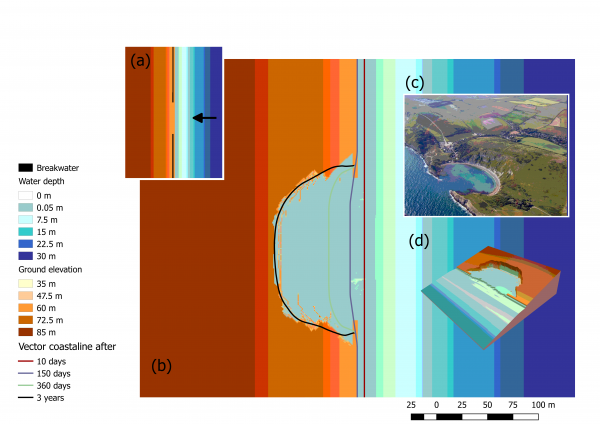Category:Coastal Modeling Environment

Metadata
Summary
The Cooastal Modeling Environment, hereinafter CoastalME, is a generic software environment to simulate coastal landscape evolution on spatial scales of kms to tens of kms, over decadal to centennial timescales. Main use is for coastal engineers practitioners seeking to simulate the interaction of multiple coastal landforms and different types of human interventions (e.g. grey and nature based solutions) to better manage the compound risk of coastal flooding and erosion.
Technical specs
In/Outputs
Process
Testing
History
It was first developed in 2017 as a proof of concept under the NERC funded iCoast project. Payo et al. (2017) described in detail the rationale behind CoastalME and demonstrated how it can be used to integrate; the Soft Cliff and Platform Erosion model SCAPE, the Coastal Vector Evolution Model COVE and the Cross Shore model CSHORE.
References
The software is written in C++ following the object oriented paradigm and has been documented using Doxygen.
The C++ source code is available for download under GNU open source license via a dedicated GitHub site here.
Creation and visualization of all inputs an ouputs can be done using your prefereed text editor (i.e. Notepad++ for the config files) and QGIS (for the raster and vector output files).
This category currently contains no pages or media.
